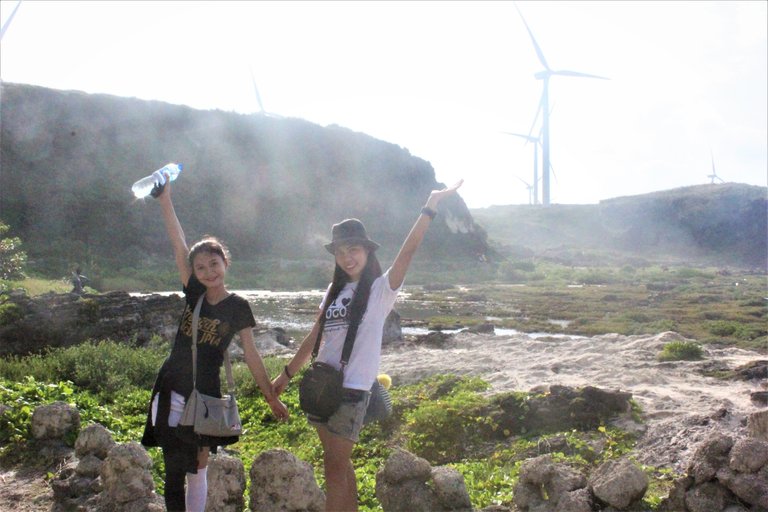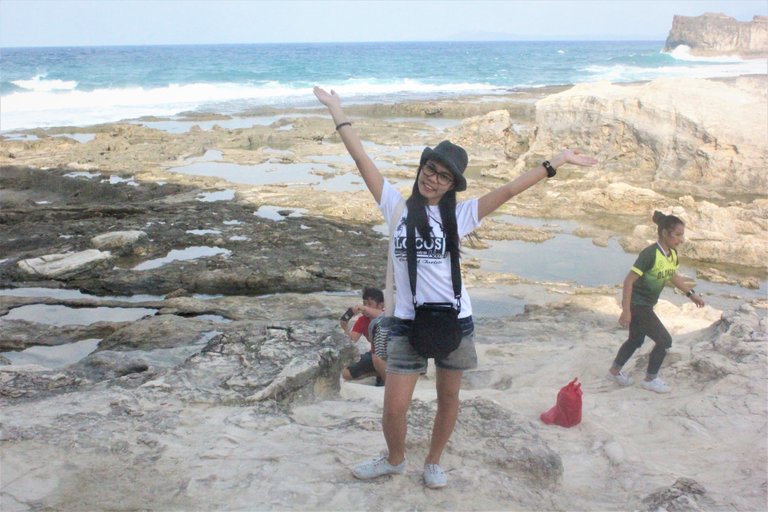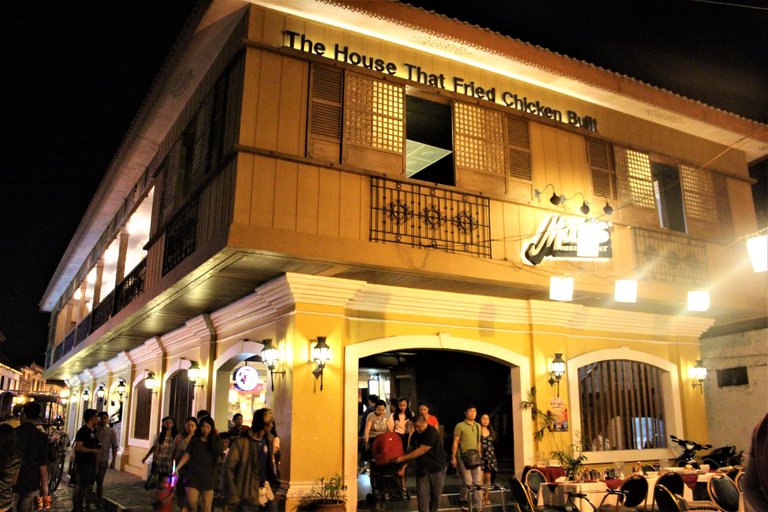ABOUT ILOCOS
To make sure you cover everything the Philippines has to offer, start right at the top! Ilocos is the perfect beginning to an exciting adventure.
Long before the coming of the Spaniards, there existed an extensive region renowned for its gold mines. Merchants from Japan and China regularly traded with the inhabitants who called their place "samtoy" from "sao mi ditoy" literally meaning "our language". The Spanish colonization in Ilocos year 1572 was never completely successful. Products such as tobacco and basi (sugarcane wine) were monopolized by the government resulting to uprisings Basi Revolt being the most noteworthy. Widespread conflict throughout the region led to the division of the old Provincia de Ilocos through a Royal Decree in February 2, 1818. Ilocos Norte was born. Since then, the province increased in prosperity. Many towns during this period built bigger stone and brick churches with massive belfries. Under the American regime, new schools, roads, bridges, dikes and government buildings were constructed.
Now, let me share our experiences during our four-days stay in Ilocos to the Steemit Community. So here we goo....
BANGUI WINDMILLS

Ilocos Norte is known as the renewable energy capital of Southeast Asia. With 100 turbines to date and counting, the first and the largest wind farms in the region can be found here. Solar and hydro plants are also finding their way to the province. Green is definitely "in" in Ilocos Norte.

They are all my classmates except for one who is our professor. Can you guess who looks like a professor among them? HAHAHA
KAPURPURAWAN ROCK FORMATION

This photo of mine was captured by my classmate Anica-Chan when we were on our way to Kapurpurawan Rock Formation. I asked her to take a photo in this particular spot because I find this place somewhat strange. It looks like you're in a forest when in reality we were just a few meters away from the sea.

Another friend of mine, Gerline Mae.

Going to Kapurpurawan Rock Formation is still few meters away from here. And these tourists wanted to take a horse riding, maybe for them to easily and quickly get there. You will just have to pay PhP50 for this ride.
Us??? We were just hiking in order to save money and to see the views on our way there.

A windmill located at the top of the mountain...

I just love the view here...

We finally arrived at our destination... I really love this photo of ours because of the background view. The waves of the sea really calls me even though I'm not Moana. Lols! HAHAHA

Ilocos Rocks literally and figuratively! The coastline boasts unique rock formations shaped by the powerful waves and winds. Some are creamy-white and massive like the Kapurpurawan Limestone Formation; some streak the beaches and create natual pools; and some come in pairs. Some are pink, black and even volcanic in origin!
PASEO DE PAOAY


This is inside the Paseo de Paoay...

The Paseo de Paoay which houses restaurants, shops and exhibit halls.
PAOAY CHURCH


The San Augustine Church commonly known as the Paoay Church, built from 1694-1710, is the most outstanding example of earthquake baroque architecture in the Philippines. The coral stone blocks and brick walls are supported by 24 buttresses. It was inscribed as a UNESCO World Heritage Site in 1993. The massive coral stone bell tower was built half a century later and stands at some distance from the church as protection against damage during earthquakes. Around the church complex are several points of interest such as the Paseo de Paoay and San Augustine Prayer Garden.

Me, pointing at our current location...
SAND DUNES


It's adventure time! Extreme sports enthusiasts have a range of options in Ilocos Norte. Sand surf and dune bash the vast sand dunes in Paoay and Laoag, the only desert in Southeast Asia.
CALLE CRISOLOGO

A walk through the famous street in Vigan during night is so magical! If you happen to visit in Vigan, I suggest that you go to Calle Crisologo at night. The stillness and shadows that come with the night adds more to the 18th century ambience of the lamp-lit street that local and foreign visitors love.

If I will have the opportunity to go back in Ilocos, I will definitely go back here in Calle Crisologo, also known as Mena Crisologo Street. For those who want to know something about the person the street is named after, Mena Pecson Crisologo is among the most-respected sons of the Ilocos region. He wrote Mining wenno Ayat ti Kararwa , which many compare to Jose Rizal's Noli Me Tangere.

This street is filled with Spanish-style houses that evoke a bygone era. You will be guided through four blocks of cobblestone streets lined with heritage houses of the families of the Filipino-Chinese traders who rose to prominence during that time of vigorous trading in gold, tobacco and other goods. As you can see in this picture, this house is turned into a Max's Restaurant.

The houses are simple but lovely subjects ready for picture-perfect shots. Couples can take advantage of this romantic atmosphere (for me, atmosphere only not romantic at all.. LOL) by having dinner in one of the old houses that has been converted into a restaurant, like Café Leona, before and after their walk.
There are still a lot of places that I wanted to visit during our stay in Ilocos but due to limited time, we haven't able to visit other famous tourists spots in Ilocos. If you want to go there, I recommend that you start your adventure in Laoag, the capital of Ilocos Norte and the hub of everything Ilocano. The World Heritage Site and sand dunes of Paoay in the south; the famous white beaches in Pagudpud and gigantic windmills in the north; and the verdant mountains and trival villages in the east are at least an hour's drive away.
The Ilocano people are very nice. They are regarded as family-oriented; placing a high value on education; hardworking; determined; and persevering. That's why some say the best product of Ilocos is its people, notably its heroes and presidents. Visit the National Shrines of Juan Luna, Gregorio Aglipay, Artemio Ricarte and Josefa Escoda. The Ilocanos are also deeply religious. The pay homage especially to the provincial patroness, La Virgen Milagrosa de Badoc.
Things to know
The most convenient way of going around the province is through a tour van booked with a registered travel agent or your hotel. Average price is PhP3,500 for the whole day, inclusive of a private chauffeur. If you're more adventurous, you can commute by bus for approximately PhP25-PhP60 per passenger. Jeeps that travel the common routes have an average fee of PhP11 per kilometer. Tricycle offer the easiest way to get around town, especially for short distances. An PhP11 payment is charged for the first kilometer, after which it is negotiable. If you have time to spare, I recommend a calesa ride around the city. Minimum charge is PhP15 for the first kilometer.
For more travel blogs, please follow me @gen.latoreno . If you like this blog, please upvote or resteem. Thank you so much! Have a good day!
Very nice. Too long for me to read xD but enjoyed the views thoroughly. I guess the one with the hat or check shirt is a Professor. xD
Thank you so much for reading @ghayas . But do I look like a professor already? xD
lolx.. No. You are too young for a Professor.
Congratulations @gen.latoreno! You have completed some achievement on Steemit and have been rewarded with new badge(s) :
Click on any badge to view your own Board of Honor on SteemitBoard.
For more information about SteemitBoard, click here
If you no longer want to receive notifications, reply to this comment with the word
STOPYour Post Has Been Featured on @Resteemable!
Feature any Steemit post using resteemit.com!
How It Works:
1. Take Any Steemit URL
2. Erase
https://3. Type
reGet Featured Instantly – Featured Posts are voted every 2.4hrs
Join the Curation Team Here